This post may contain affiliate links, from which we earn an income. Click here to read our affiliate policy.
Fitting a Compost Toilet – Is it Right for You?
Having recently moved from a motorhome to an expedition truck, we decided to replace the well used Thetford Cassette Toilet and fit a Separett Tiny Compost Toilet. We share our experience of fitting and using the toilet in our truck here.
The good folks at Woo Woo Waterless Toilets help us out with our purchase (thanks guys!) but as always, all opinions and views are our own.
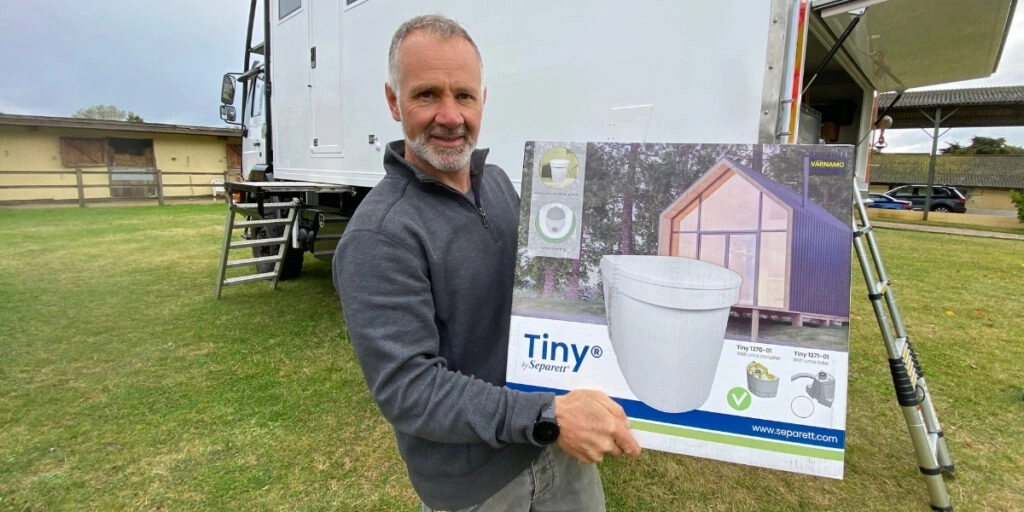
What is a Compost(ing) Toilet?
This is a really important point which you need to understand before you make any decisions regarding a toilet for your home on wheels.
Composting Toilets
A composting toilet is a dry or waterless toilet which composts human waste through a biological process. This composting process means that the human waste decomposes and becomes compost-like material. There is no water required for flushing and no connection to a cassette.
In most traditional composting toilets, a carbon material such as sawdust, coconut coir or peat moss is added after each use. Doing this creates air pockets in the human waste to promote decomposition, and also improves the carbon to nitrogen ratio, thus reducing any unpleasant smells.
On a regular basis, a handle or spindle on the outside of the collection chamber is turned, adding more air into the mix to promote faster composting.
The full composting process can take months. Given that the average human produces 2.78kg of poo a week, around 145kg a year, the weight of a Giant Panda, there is no composting toilet that’s large enough to cart enough poop around to make proper compost!
Usually, the partially composted contents are moved to a secondary system, like a compost heap, to allow more time for composting to further reduce any pathogens.
Most composting toilets, like the Separett Villa, have urine diversion systems in the toilet bowl to collect the urine separately, which helps control excess moisture and unpleasant smells.

Compost Toilets
The key difference between a composting toilet and a compost toilet is not just in the name. A composting toilet does just that, and starts the composting process through the addition of carbon matter to the human waste.
A compost toilet does not start the composting process at all as no carbon matter is added.
A compost toilet enables you to collect and contain human waste in a way that allows it to be composted when you dispose of it. This means all consumables such as bags and liners need to be compostable.
One of the key differences between a composting toilet and a compost toilet is size – the latter tend to be smaller making them ideal for tiny homes and small spaces like bathrooms in RV’s, motorhomes and camper vans.
The reality of life on the road means that solid waste from both composting and compost toilets is likely to be bagged and binned – see more on that later.
How Does the Separett Tiny Actually Work?
The Tiny is what’s known as a urine diverting toilet. This urine diverting toilets has two main components insider the main container; a large 14.5 litre bucket for collecting solid matter and a 7.1 litre container for collecting urine.
Separating the two types of waste is the key to removing the smell created when urine and faeces are mixed together and left for more than a few hours.
You can get Tiny model with a urine diverting pipe which leads to a holding tank, suitable for a tiny house but less suitable for a motorhome or overland vehicle set-up.
The solid waste container is sited at the rear of the toilet, and the baffled urine bottle at the front, designed to work with how the human body expels waste.
The solids container is covered by a concealing view screen and is lined with a compostable bag and absorbent liner. The liner takes any liquid, from loose stools or escaping urine and forms it into a gel like substance.
At the top of the urine tank is a cage which holds a bio-drain tablet that any urine has to pass over before entering the bottle. This chemical tablet prevents crystals from forming in the urine and reduces smells.
The toilet has a small 1.5w fused fan which is on constantly and helps to remove odours through a vent pipe which comes out of the body of your vehicle beneath or to the side or rear of the loo.
A 12v connection is required, although a 230v adapter with plug is also provided – this connection also powers the alert light which lets you know the urine container needs to be emptied.
We added a small switch to the side of the loo so we could turn off the fan at night, as I am quite a light sleeper. However, we have found that with the lid down and door closed, we don’t hear the fan. When the toilet has been used, having the fan on definitely helps with smell.
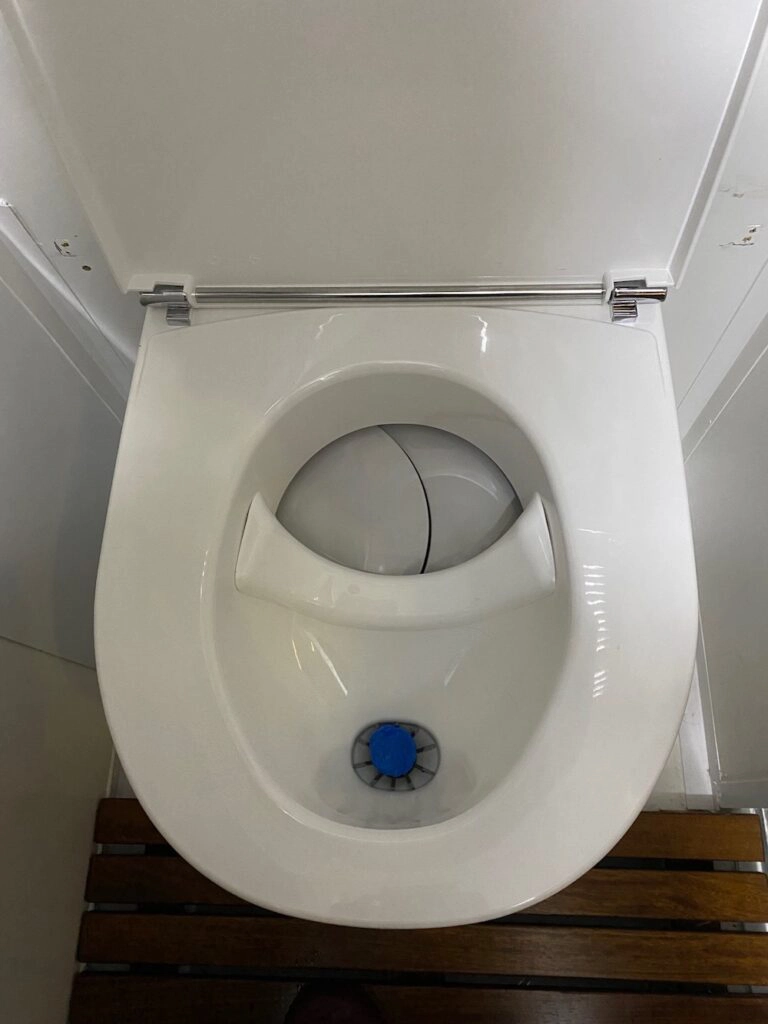
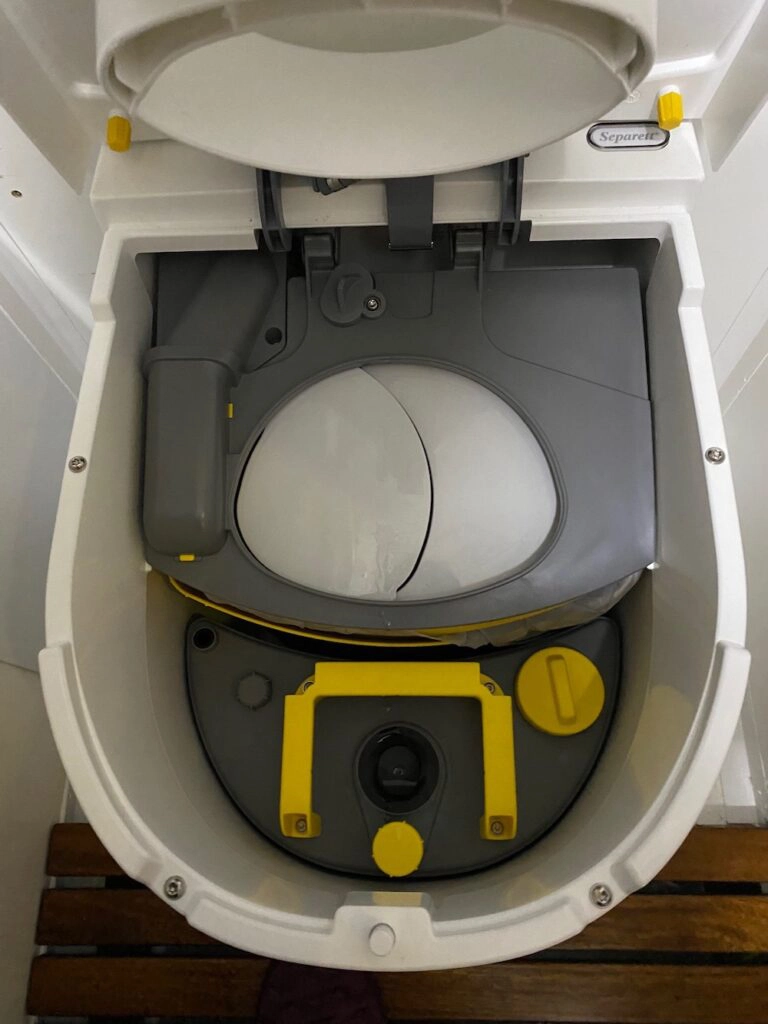
What Happens When You Use the Loo?
When you sit (and sitting is required!), the spring loaded seat opens and the concealing screen consisting of two overlapping flaps, opens. This means that when you open the lid, you’re not faced with the sight of a bucket full of poo!
When you urinate, the pee is funneled into the bottle through a small opening, at the top of which is the bio-drain tablet.
As a female, I was slightly dubious that this would work, but clearly the research has been done and the system does indeed do what it should.
The pee container is well sealed at the entrance and we’ve had no issues with pee escaping to other parts of the toilet or splashing when driving.
When you poo, you need to sit slightly further back to ensure the flaps open fully. It took a while for us to get used to this, and I still check just to make sure the way is clear!
Once finished, you can add your soiled toilet paper to the solids container. Wiping can feel awkward to start with …when you reposition to access, the flaps can partially close meaning you risk dropping your soiled loo paper onto them. Messy. You do get used to getting the positioning right, it’s just different.
If you prefer to wipe standing up, this means using your hand to press down on the spring loaded seat to open the flaps so you can dispose of the paper, which can feel a little awkward.
Separett have just released a modification for the flaps after receiving feedback from lighter weight users that the flaps don’t always fully open, especially when changing position.
If you’re in this category, or the toilet will be used by children, make sure you order the model which includes the modification, or get one of the modification kits.
When the urine container is nearly full, a red light comes on to let you know it needs emptying. You have to make a judgement regarding how full the solids container is, usually done by peering in.
How Do You Empty a Separett Tiny Compost Toilet?
We empty the urine bottle every couple of days. It’s a really easy process of removing the bio-drain tab, lifting the mechanism and removing the bottle. Place the cap over the opening and then you can take the bottle to the nearest toilet for emptying, perhaps in a canvas bag so as not to offend anyone.
You can find your nearest public toilet using the Great British Toilet Map.
The urine container has an air inlet valve which helps to prevent glugging, making the bottle quick and easy to empty. Once empty, give it a quick rinse and you’re ready to place it back into the Tiny toilet.
We tend to empty the solids container every two to three days, but it really depends on activity. This is just a case of removing the container using the handle, taking out the bag and tying it up ready for disposal.
There is a separate lid you can use to cover the contents if you need to transport the container, but we have never used this.
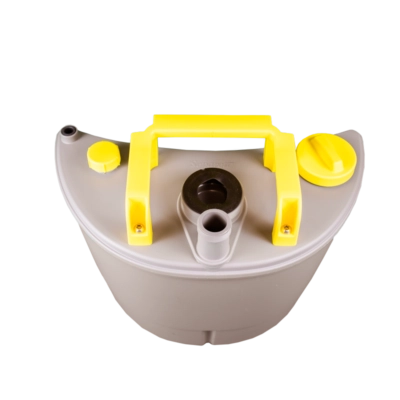
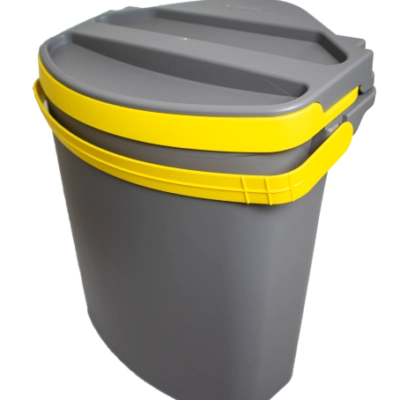
Where Can You Dispose of Compost Toilet Solid Waste?
The big question I had prior to purchase was “where can I empty the contents of a compost toilet?” I spoke with Woo Woo Waterless Toilets about this and they told me the following;
“In an ideal world, the solid material (faeces and toilet paper) would be transferred into a compost bin to enable full-on composting to happen, ultimately feeding the earth with nutrients and making for happy trees and bushes.
However, I also understand that when you’re travelling a lot, you may not have access to composting facilities and nor do you have the space for any appreciable amount of storage.
The most common method people dispose of the solids on the go, is by ‘bagging and binning’ – this is legal when disposing of in council/municipally operated bins (in effect it’s like nappies or incontinence pads, only better in the sense the contents are typically much drier). The ‘waste’ is classed as ‘offensive’ waste, and is ideally double-bagged and should weigh no more than 7kg per bag. Regulations outside the UK will vary.
Further options would include burying the contents, but this should be done either on your own land or with the permission of the landowner. In the last few years, there has been a surge in ‘wild camping’, but unfortunately, this has also highlighted the fact that many people don’t act responsibly and have left litter, toilet paper etc over the countryside, so wherever or however the solids are disposed of, it should be done responsibly with due consideration for the rest of nature and the natural beauty of the area.”
This is what the UK government says about offensive waste;
“Offensive waste is non-clinical waste that’s non-infectious and does not contain pharmaceutical or chemical substances, but may be unpleasant to anyone who comes into contact with it. Municipal offensive waste is further classed as hygiene waste and sanitary protection like nappies and incontinence pads.
If you’ve produced more than 7kg of municipal offensive waste, or have more than one bag in a collection period, you must segregate it from any mixed municipal waste.
If you’ve produced less, you can dispose of your municipal offensive waste in your mixed municipal waste (‘black bag’).”
If you’re travelling outside of the UK, you should check with the country you’re visiting about disposal of waste from your compost toilet.
However you decide to dispose of your waste, if you use compostable consumables then you know that eventually all the components, including the waste, will break down naturally.
So you could dig a hole in the wilds somewhere (avoiding private property, watercourses, habitated areas and areas where animals graze of course), leave your (doubled-bagged) bag in a bin ready for a land-fill site, or on a communal compost bin, although sadly these are uncommon.

Is a Compost Toilet Suitable for a Motorhome?
Yes, definitely. If you travel for more than a few weeks at a time, and hate the struggle to find somewhere to empty your traditional Thetford cassette toilet, then this toilet could be for you.
If you’re converting a van or self-building an overland truck, then you should also be considering a compost toilet.
Update – after two months living with our Separett Tiny Toilet, life on the road has been transformed! It is so easy to empty the urine and dispose of solid waste. No longer are we constantly researching where we can empty. This is one purchase you won’t regret!
Can a Compost Toilet Replace a Thetford Cassette Toilet?
Yes, absolutely.
We did just that with our new overland truck we bought to replace our motorhome. The truck had a Thetford C403 bench style toilet fitted which was old and had been filled with chemicals over the years, which we hate the smell of.
We could have fitted a SOG system (which we’ve had in all our motorhome toilets), but this would have cost over £200, so we decided to put the money towards a Tiny instead.
The hardest part of the install by far was removing the Thetford, which had been siliconed in to within an inch of its life!
Once out, we levelled the floor. In our old Thetford model the cassette sits above the floor but in some Thetford loos it sits below, meaning you’ll be left with a void space or will have to build up the floor to install the toilet.
We used the electrics required for our old toilet’s flush mechanism to power the fan. We also used the vent hole through the floor which this Thetford model has, for the vent pipe.
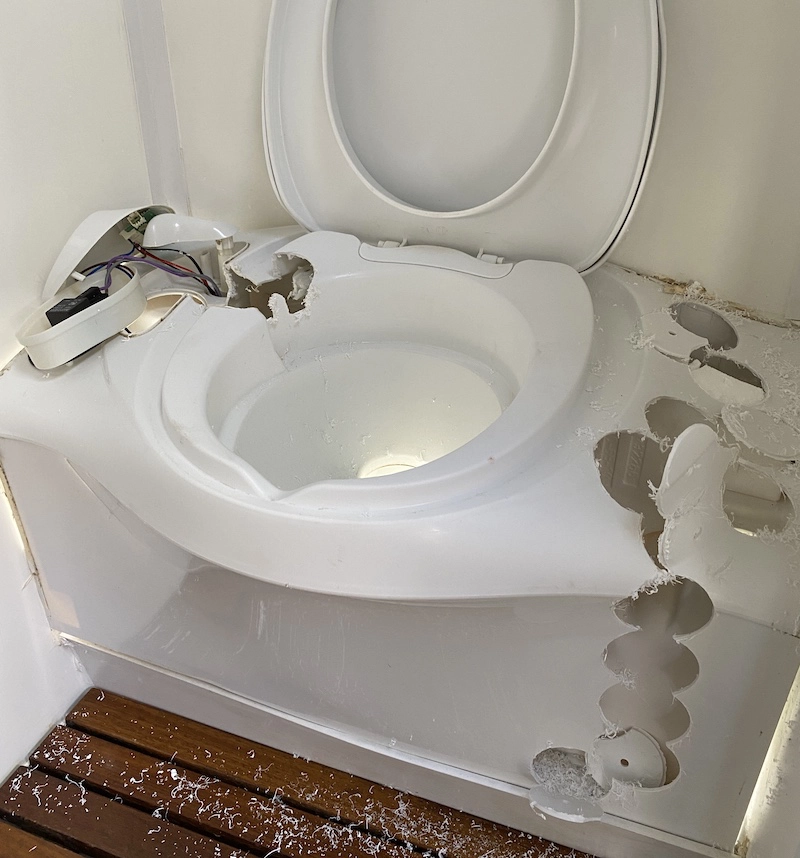
Installing the Separett Tiny
Installing the Separett Tiny was easy and straightforward in comparison to removing the existing loo.
Once we had a flat surface, we positioned the toilet into place.
We connected the 12v power supply and tested. We then connected the supplied air ducting and routed it through the floor, using the fine mesh end cap provided to prevent any insects from trying to enter the vent pipe.
With all that in position, the vent pipe was siliconed at floor level to create a waterproof seal, and then silicone greased (supplied) where the vent pipe meets the toilet, which helps with connection and creates a seal.
The electrics were wired into the supplied fitting, which then plugs into the back of the toilet.
The toilet was then secured using the three provided screws in the base and two into the back wall.
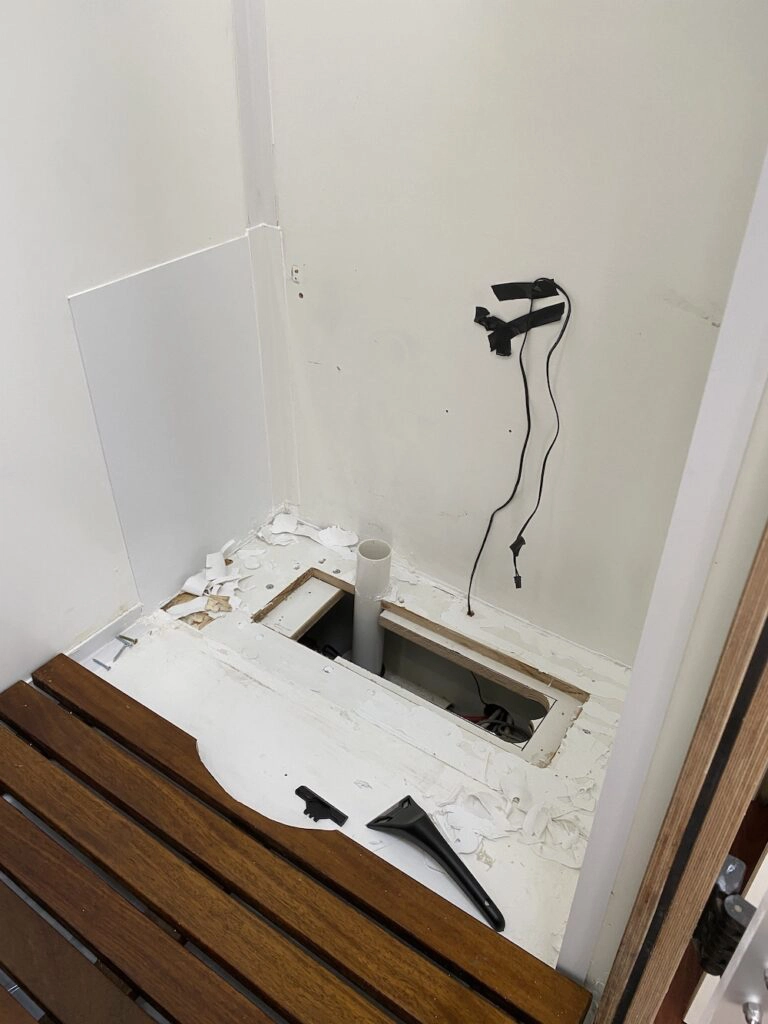
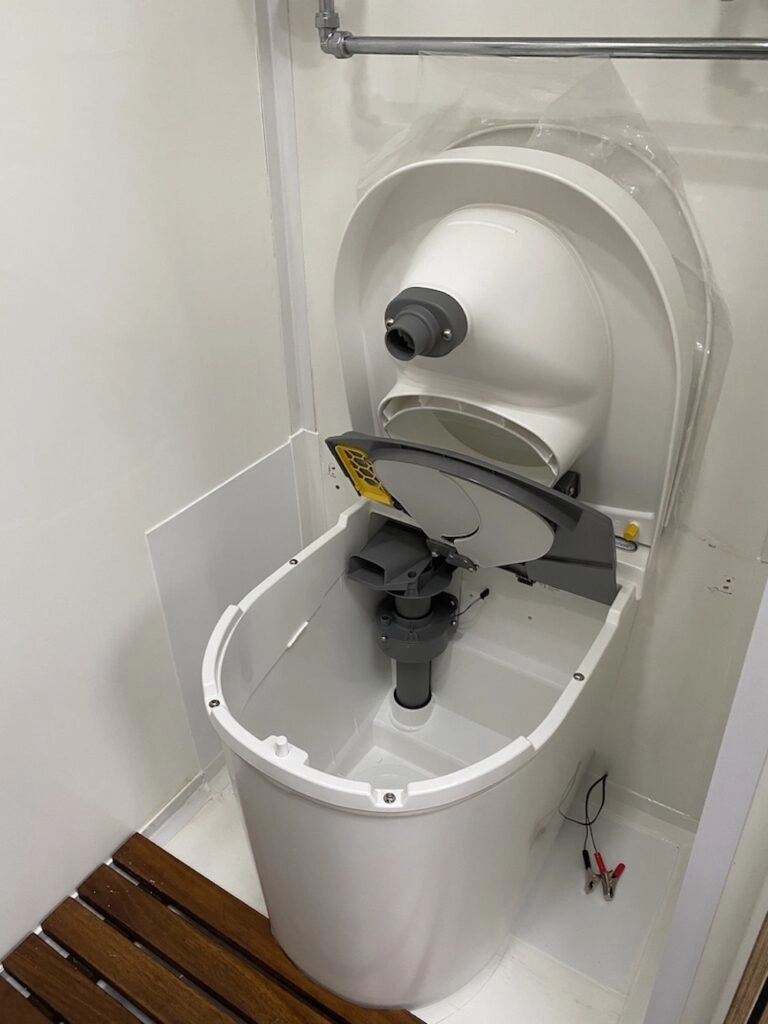
Ongoing Consumables
There are some items required on an ongoing basis to be able to use the toilet. Woo Woo Waterless toilets provide a sample pack of ten compostable bags, a bio tablet and a compostable liner.
The bio tablet lasted around two weeks, and you need a new bag and liner every time you empty the solids container.
We shopped around for alternative suppliers, as we found the consumables to be expensive on the Woo Woo Waterless Toilets site.
We were able to buy Purio compostible caddy liners in Lidl for a tenth of the price, meaning doubling them up is still way cheaper.
We bought these compostable commode liners (the only compostable ones we could find) on Amazon UK, but found that the bag is the wrong shape for the Tiny bucket. We use the liner which is in every bag, and used the bag for everyday rubbish – bonus!
Update – after two months on the road, we have found we do no need the absorbant liner, because we bag and bin pretty much every day. You may need the liner if your stools tend to be wet or loose.
We haven’t found an alternative for the bio block as yet, but we think it’s mainly about odour management (as we don’t have a urine diverting pipe), so might experiment with a urine screen or something similar.
Update – we stopped using the bio block and have not noticed any odour change. We clean the urine container at every empty and wash out with disinfectant, which seems to manage the smell. There is only a risk of crystalisation if you have a pipe to a urine container.
Ten Reasons to Choose a Separett Tiny Compost Toilet
- Aesthetically pleasing – we loved the sleek lines of this compost toilet, which was released in the United States & UK in April 2021. Traditional composting toilets are cumbersome things, with handles to rotate the waste and bulbous parts, making them pretty ugly.
- Space saving – smaller and less wieldy than a composting toilet, the Separett Tiny toilet dimensions are 470mm high, 398mm wide and 497mm deep.
- Easy to empty – no more worrying about finding a chemical toilet point (especially in the UK). Emptying of both urine and solids containers can be done in just a few minutes.
- Beautifully made and thought out – everything slots into place and fits together properly, meaning no loose parts and no rattling. The toilet feels solid when seated.
- Easy installation – simply designed and extremely easy to fit, even for an amateur DIY’er.
- Requires no water – there is no flush, so no complicated water connections are required. This also means the precious water in your fresh water tank goes further.
- Requires no carbon matter – no need to carry around bricks of coconut coir or additives which need to be prepared beforehand.
- Hygienic and easy to clean – straight lines and continuous smooth plastic make this toilet quick and simple to clean. No more awkward places the cloth can’t reach!
- Very low power consumption – the fan uses 1.5 watts when connected to 12v, making it possible to run constantly from your leisure batteries if you wish.
- Long guarantee – Separett offer a five year guarantee on the Tiny, meaning you have peace of mind if anything does go wrong.
Conclusions
We love our Separett Tiny Compost Toilet and after living with it on the road, we’ve found using it really easy, and disposing of the waste pretty simple, even in the UK.
This is a high-quality product, well-made and beautifully designed and will certainly enhance your bathroom experience on the road!
Are you looking for more motorhome & overland kit? Check out these top posts…
Must-Have Mobility Aids for a Comfortable Motorhome Journey
Silwy Magnetic Glasses: Do They Really Work?
58 Awesome Campervan Gifts for Van Lifers
How to Choose the Best Motorhome Reversing Camera
Campervan & Motorhome Stickers to Zhuzh Up Your Van!
13 Best Vanlife Books: Inspiring Books For Nomad Travellers
Love it? Pin it!
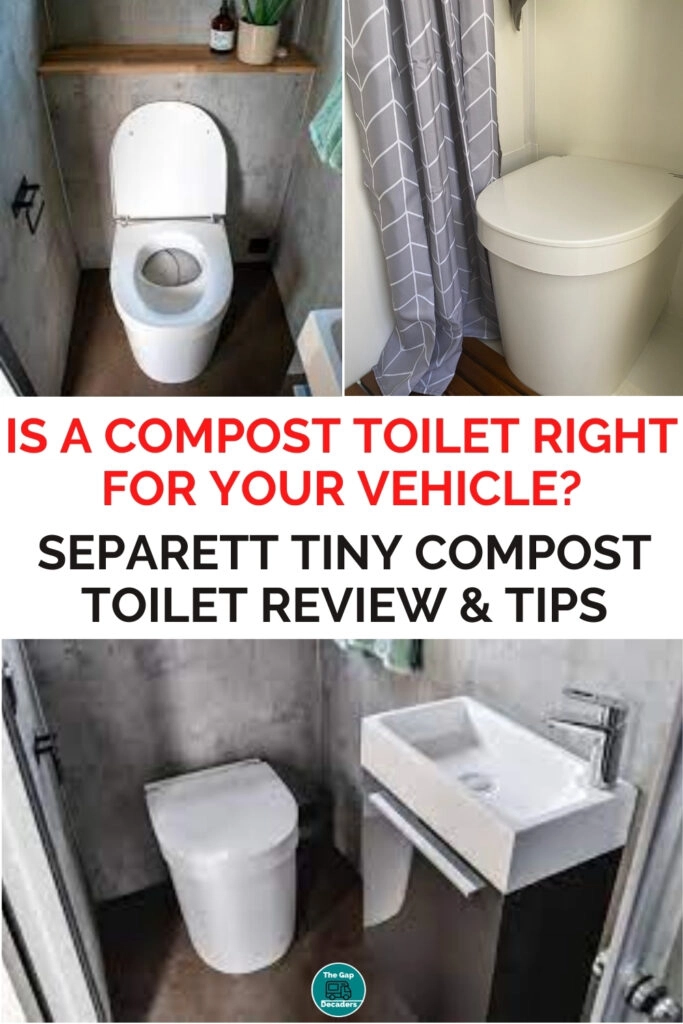
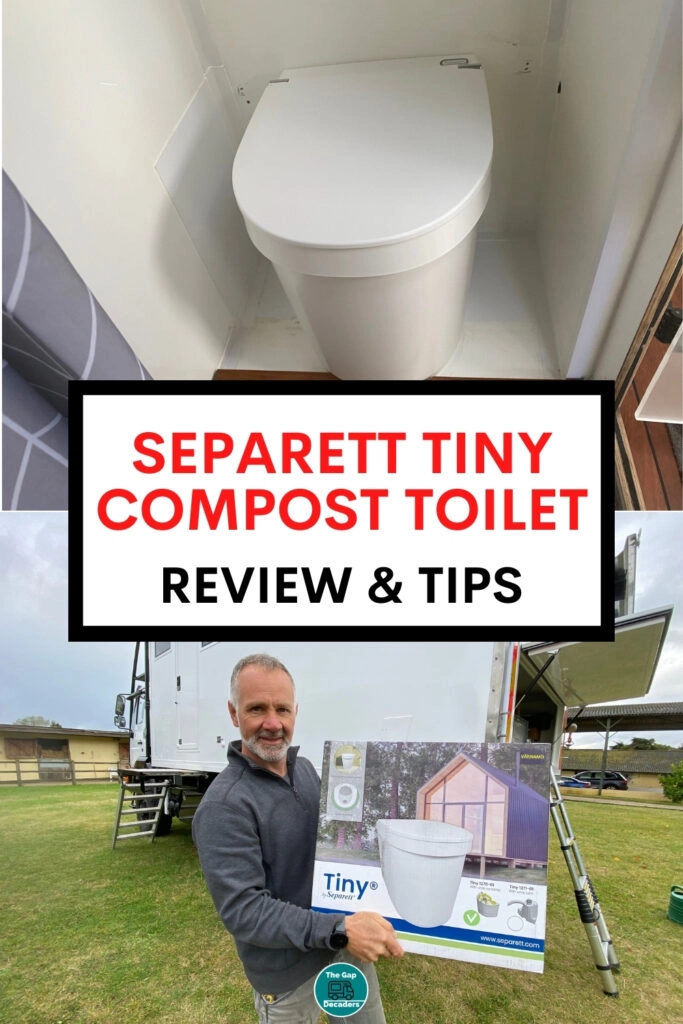

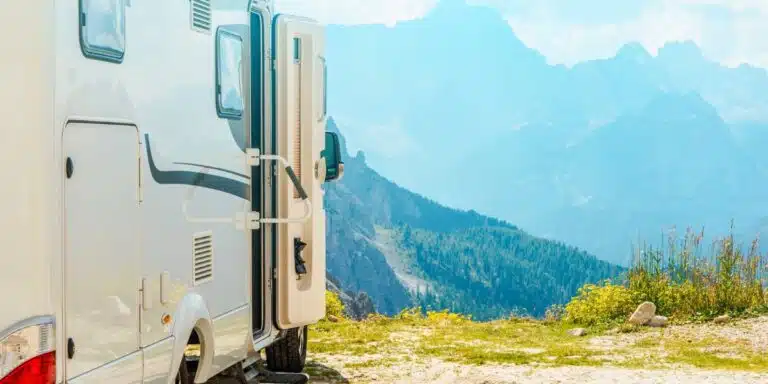
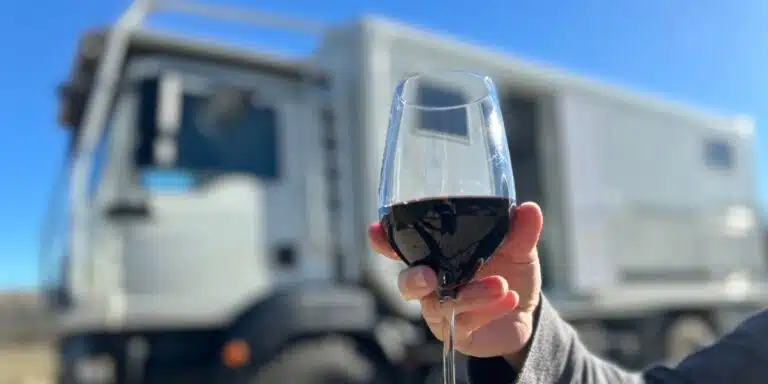

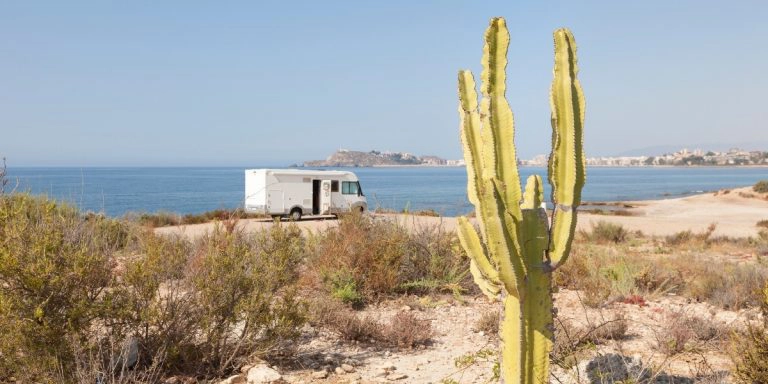
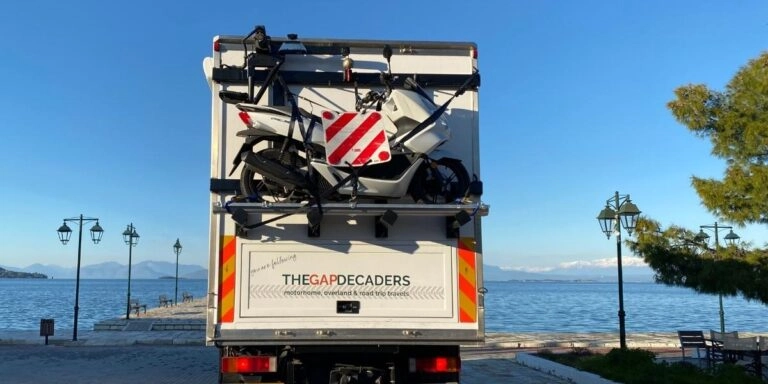

Hi Rachel We love this toilet 🙂 We don’t have any smells but we do empty pretty much daily. I also line the bucket with a smelly bag – the violet coloured ones are good. Hope that helps 🙂 Izzy
Hello, just wondering how you are going with this toilet? We use it in our caravan and while we don’t have any odour issues inside, there is a definitely ‘sewage’ type smell from the outdoor fan outlet.
Do you have any tips for how to manage this please?
Thanks